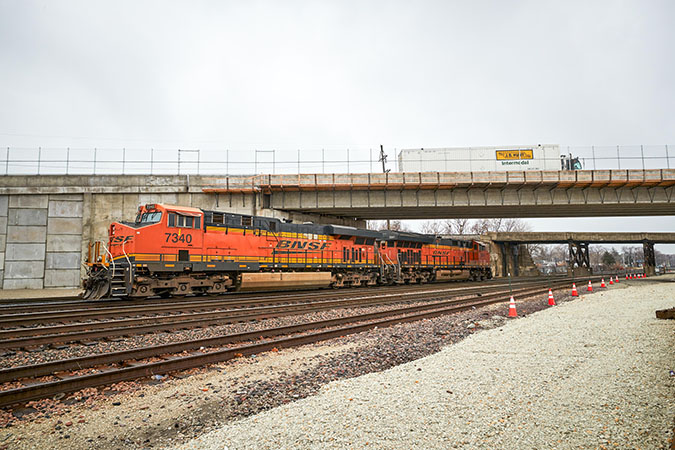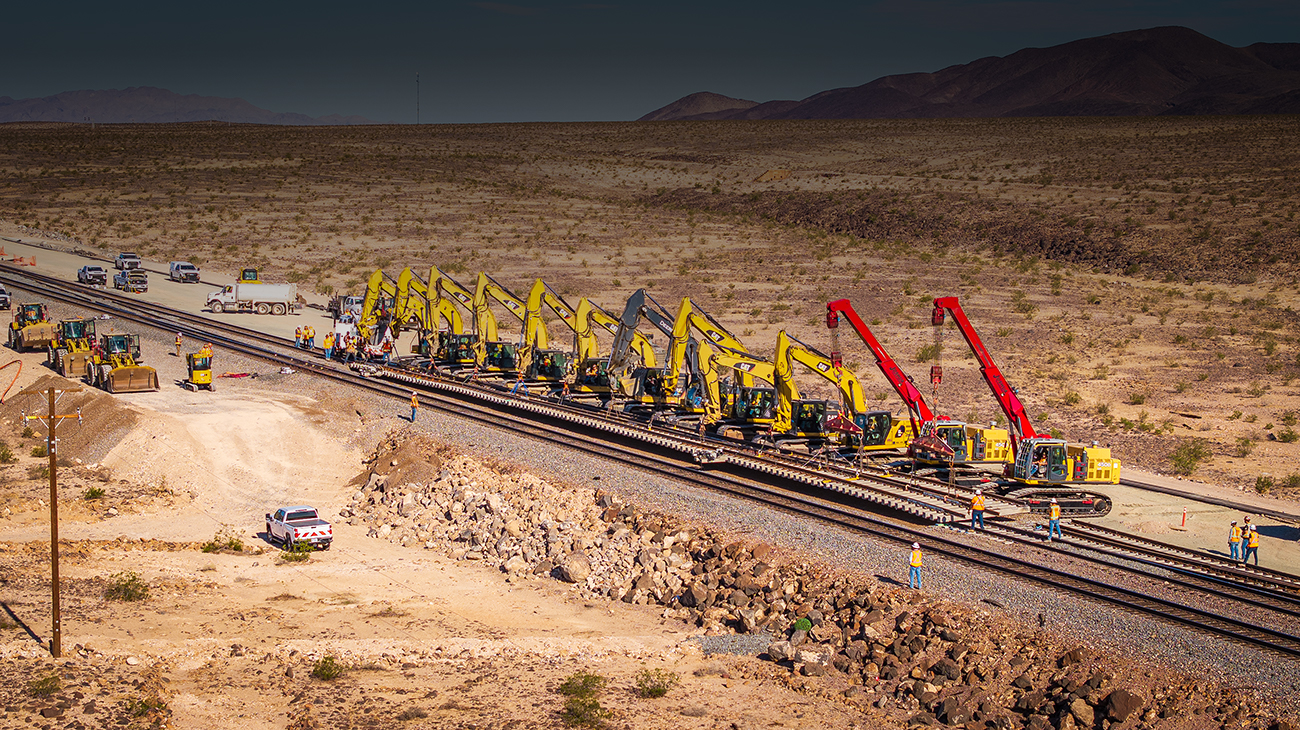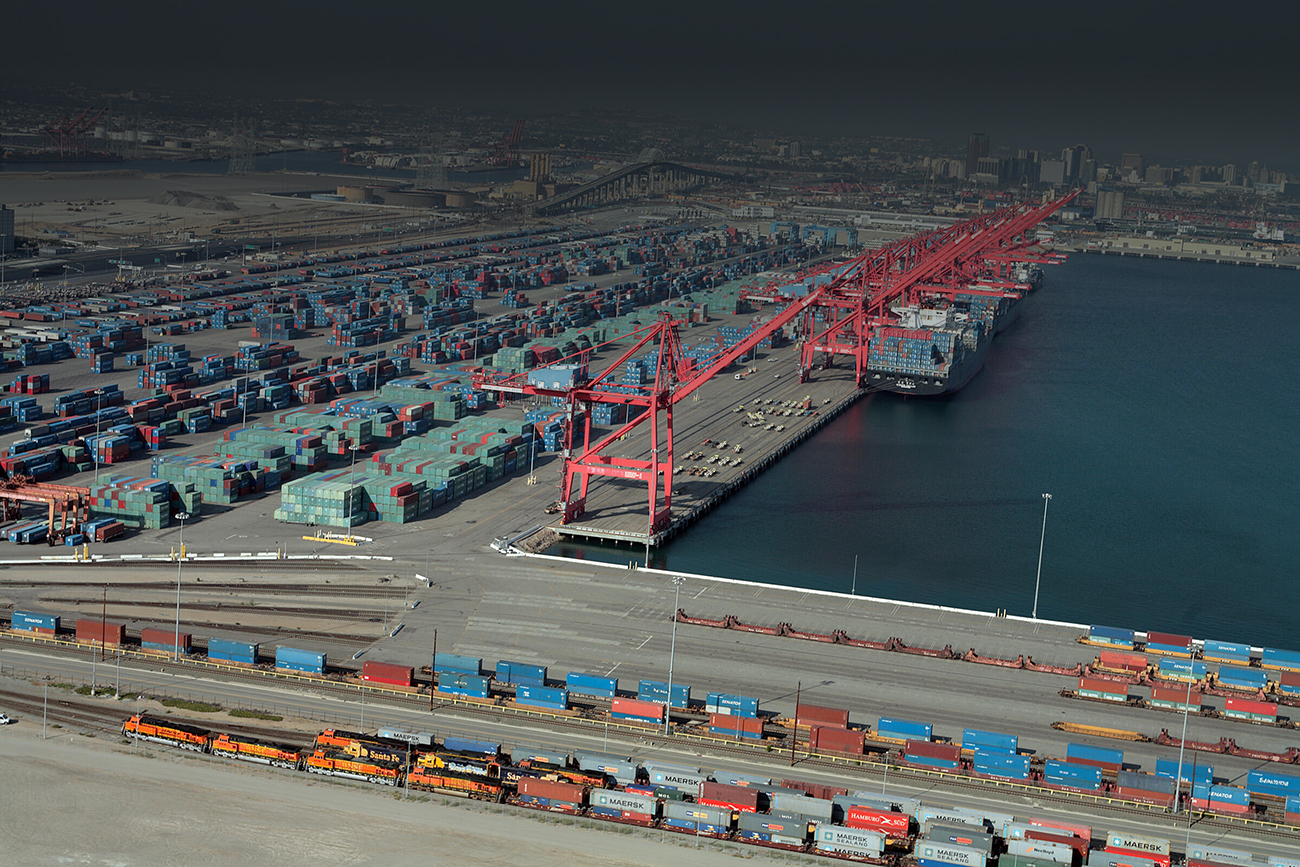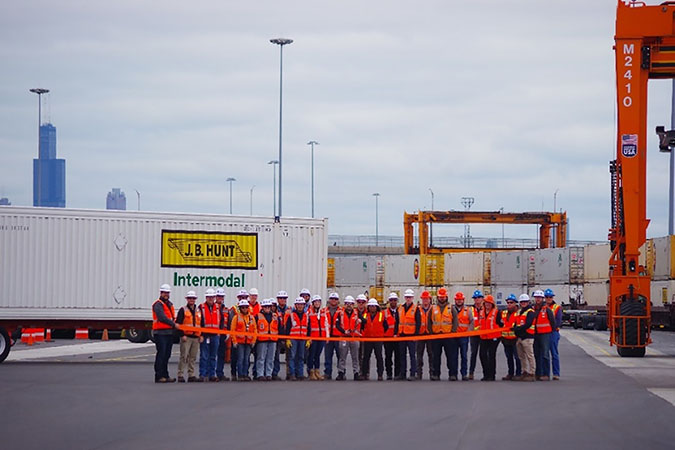
Cicero Intermodal expansion delivers capacity, sustainability and customer value
By EUNICE ARCHILA
Staff writer
In the heart of the Windy City, BNSF’s Cicero Intermodal Facility underwent a transformation that’s as strategic as it is sustainable. With the final phase of a multi-year expansion nearing completion, the project is already delivering on its promise: increased capacity, improved safety and efficiency, and meaningful environmental benefits for customers and communities alike.
The expansion will increase Cicero’s annual lift capacity by 175,000 units. This is an essential step in supporting BNSF’s intermodal growth strategy and meeting rising demand across our 32,500-mile network.
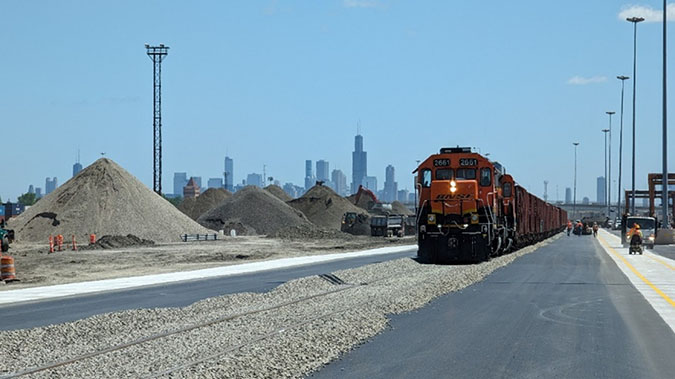
“Reconstructing an active railyard while continuing to provide quality service to our customers presented its own unique challenges,” said Engineering Manager Chris VanDeven. “The success of this project is a direct result of the collaboration and innovation of all those involved.”
Teams managed overall costs to mitigate inflation, applying value engineering and working collaboratively with stakeholders to define the right scope and deliver what was needed. Everyone involved consistently exceeded expectations.
We’ve added 8,500-foot of production track (where intermodal trains are loaded and unloaded), 55,000 feet of reconstructed receiving yard tracks, new trailer parking with more than 800 stalls, a hostler repair shop and a 100-foot diameter turntable. But the real story lies in how the work was done.
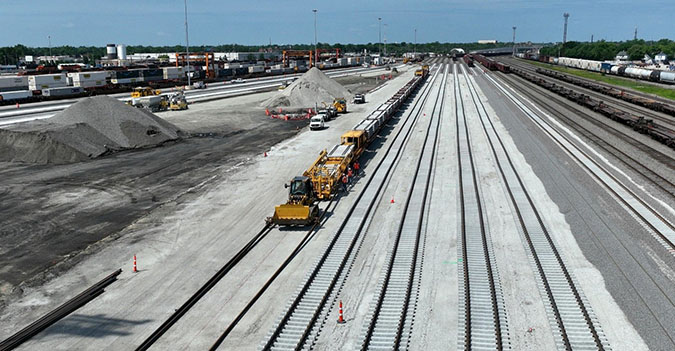
By optimizing site grading, the team reduced excavation by 63,900 cubic yards. Instead of hauling away excess soil, they repurposed 204,000 cubic yards to build an embankment on adjacent BNSF property that eliminated 1,449,000 miles of truck trips and over 5,000 metric tons of greenhouse gas emissions.
To put that in perspective, offsetting that much carbon would require planting 120,000 trees, no small feat in a dense urban area like Chicago.
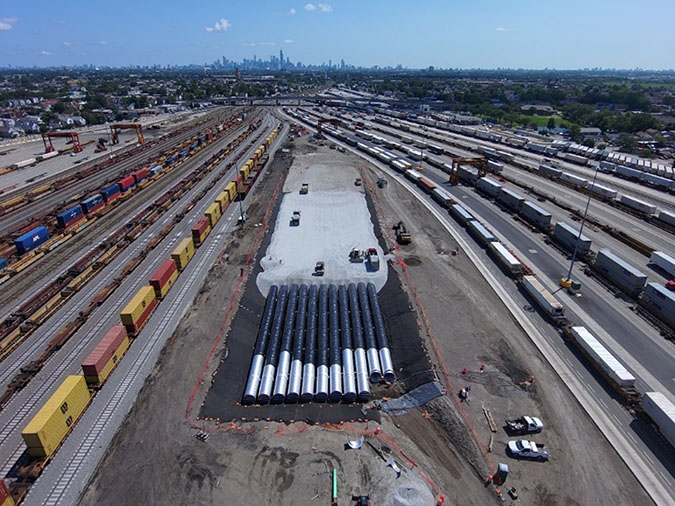
Beyond the railyard, the project also brought benefits to the surrounding community. Working with local municipalities, we designed and built a 2,700,000-cubic-foot stormwater detention system to better manage runoff and reduce strain on the city’s sewer infrastructure.

In a nod to preservation and reuse, we donated the facility’s original 135-foot locomotive turntable to the Railroading Heritage of Midwest America in Silvis, Illinois, and a 15-ton crane from the Cicero locomotive repair shop also found a new home at the Illinois Railway Museum, where it will help maintain a fleet of 58 historic diesel locomotives.
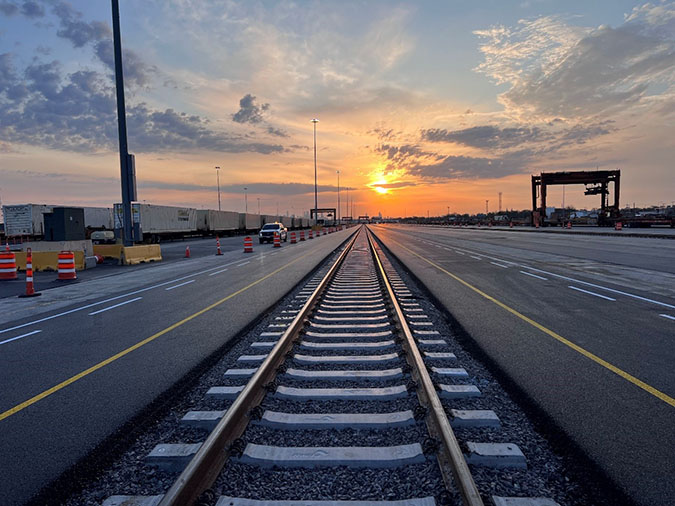
“Cicero employees recognize and appreciate the investment BNSF has made in the terminal,” said Joseph Ratulowski, Cicero terminal superintendent. “The improvements in safety and capacity have strengthened our confidence of this yard and we know it will deliver benefits for years to come!”
The Cicero expansion has been a part of a broader, long-term commitment by BNSF to invest in infrastructure that supports customer growth and supply chain resilience. From intermodal hubs to mainline capacity, every project is designed with the future in mind.
With more capacity, smarter design and a smaller environmental footprint, Cicero is ready to meet the needs of customers today and tomorrow.
